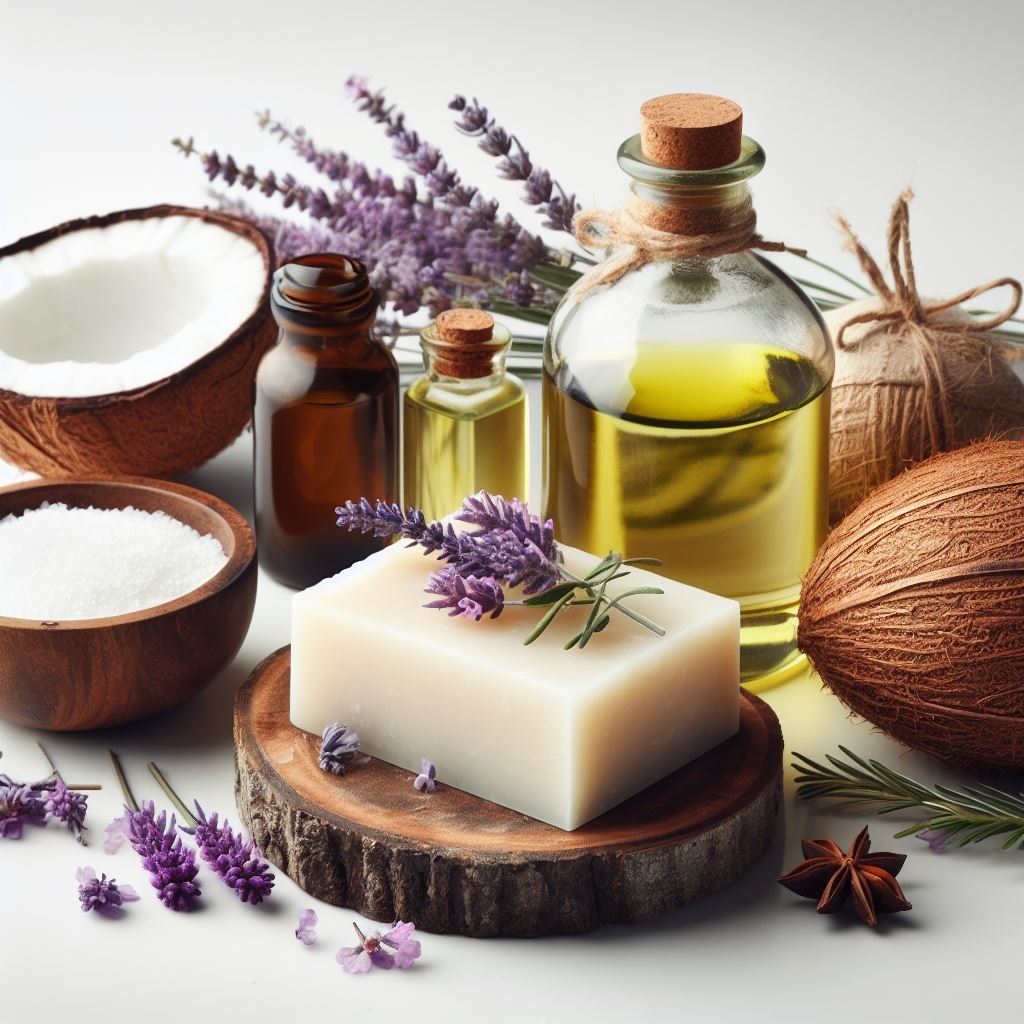MAKING CASTILE SOAP
Castile Dreams: Crafting Your Own Multipurpose Soap
Castile soap, the gentle giant of the cleansing world, has captivated hearts for centuries. Made with pure vegetable oils and lye, it’s known for its versatility, mildness, and luxurious lather. But why buy it when you can craft your own personalized batch? Dive into the world of DIY castile soap and discover the magic of creating this versatile gem.
Unlocking the Castile Charm:
Making castile soap might seem daunting, but the process is surprisingly accessible. It all starts with choosing your oils. Olive oil is the classic choice, offering a gentle and moisturizing base. Experimenting with coconut oil adds a touch of lather, while avocado oil brings a boost of hydration. The key is understanding the properties of each oil and finding the perfect blend for your desired outcome.
Once you’ve chosen your oils, the fun begins! Following a safe and reliable recipe, you’ll carefully combine them with lye to trigger the saponification process. This transforms the oils into soap, releasing glycerin – a natural humectant that keeps your skin feeling soft. With patience and attention to detail, you’ll witness the creamy batter thicken and reach “trace,” a crucial stage where you can personalize your soap with essential oils, herbs, or even natural colors.
The final step is molding and curing, allowing your creation to harden and mature. In a few weeks, you’ll be holding a bar of castile soap that embodies your unique touch. Not only will you have saved money, but you’ll also have the satisfaction of crafting a product tailored to your needs and preferences.
So, unleash your inner alchemist and embark on the castile soap adventure. You might just discover a new passion and a shelf full of personalized cleansing creations!
In this article, we will see How Making Castile Soap:
– GENTLE
– VEGAN
START TO FINISH TIME:
1 to 2 hours,
24 hours insulation,
4 to 6 weeks to cure
SCENT: LAVANDER & EUCALYPTUS
Chances are that you’ve heard of Castile soap and have wanted to make it. They are very gentle soaps that cleanse but do not strip the skin of its natural oils. Lavender and eucalyptus are known to be simultaneously calming and stimulating scents and add a lot to this soap to make it special.
SAFETY FIRST! Remember to wear your safety equipment and mix the lye water outside. Tell everyone you live with that where you’re working is off limits. Give yourself enough time to complete the recipe.
EQUIPMENT
- Kitchen Scale
- Glass Bowls
- Large spoon
- large stainless steel pot
- Small zip-topplastic bag
- Mold
- Thermometer
- Parchment Paper
- Stick Blender (or hand mixer)
- Rubber Spatula
- Blanket
INGREDIENTS
- 750gr (25 ounces) Olive Oil
- 210gr (7 ounces) Coconut oil
- 120gr (4 ounces) Lye
- 360gr (12 ounces) Water
- 15gr (0.5 ounce) Lavender Essential Oil
- 15gr (0.5 ounce) Eucalyptus essential Oil
1. HEAT THE FATS/OILS:
2. MIX THE LYE WATER:
Put on safety gear, including protective eyewear, a mask, gloves, and long sleeves. Outside, carefully add the lye crystals to the water and stir until dissolved. Allow to cool to 100°F(38C°) to 110°F(45°C). If the oils and lye water cool at different rates, you can use a cold- or hot-water bath in the sink.
3. PREPARE THE MOLD:
While the oils and lye water cool, line the mold with parchment paper.
4. COMBINE AND BRING TO TRACE:
When both the oils and lye water are 100°F(38C°) to 110°F(45°C), carefully pour the lye water into the pot of oils. Use a stick blender (or hand mixer) to mix for 1 to 2 minutes and then let the mixture rest for 4 to 5 minutes. Repeat mixing and resting until light trace.
5. MIX IN NATURAL ADDITIVES:
When the soap reaches light trace, add the lavender and eucalyptus essential oils and blend for 30 seconds.
6. MOLD THE SOAP:
Pour the soap mixture into the mold, cover with a lid or parchment paper and insulate with a blanket for 24 hours.
7. CUT AND CURE:
Remove the soap from the mold. If it seems too soft to remove, wait another 12 to 24 hours before removing. Cut the soap into 12 bars. Allow the bars to cure in a well-ventilated location for 4 to 6 weeks.
TIP: Castile soap is a softer soap that is very gentle on the skin. It can take longer to come to trace, so watch carefully for light trace. When you see a slight trail that looks like a glaze when you dribble soap over the top of the batch, then you’ve reached light trace and are ready to pour it into the mold.
Sources / References
Natural Things Shop uses only high-quality sources to support the facts in our articles. Read our editorial process to learn more about how we fact-check our content and keep it accurate, trustworthy and reliable.
All the images we use on our site are produced with Dall-e 3 artificial intelligence technology. There are no legal problems regarding copyright.
Kelly Cable
- The Natural Soapmaking Book For Beginners
- DIY Soaps: Using All-Natural Herbs, Spices & Essential Oils


